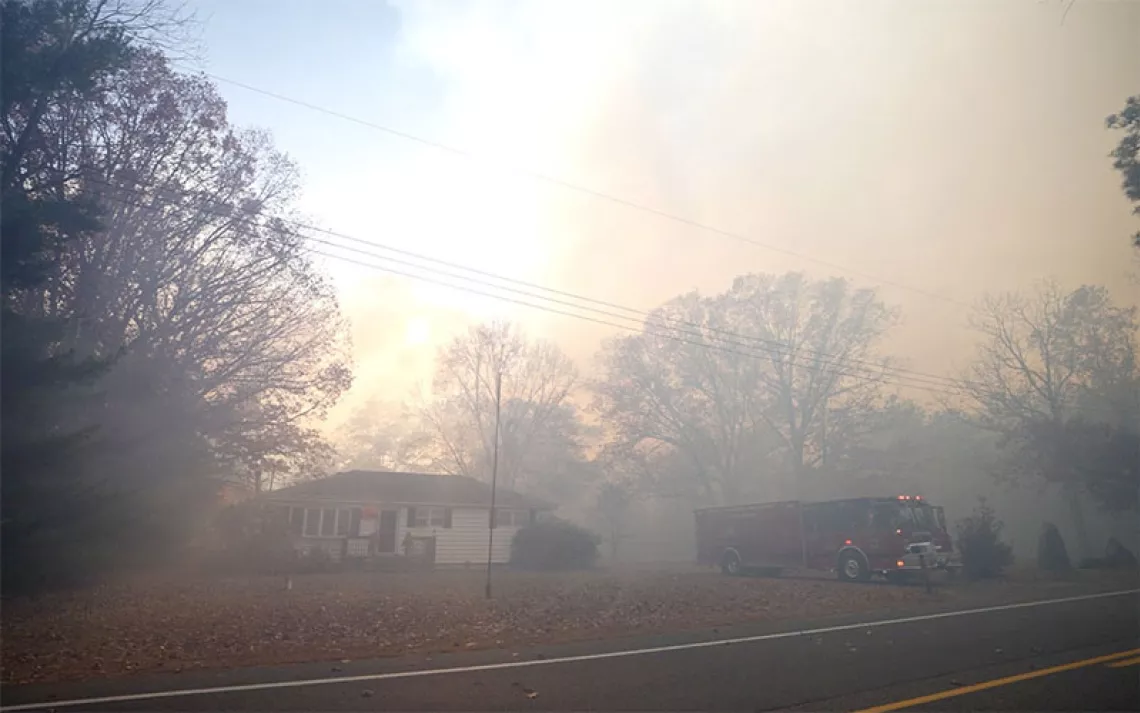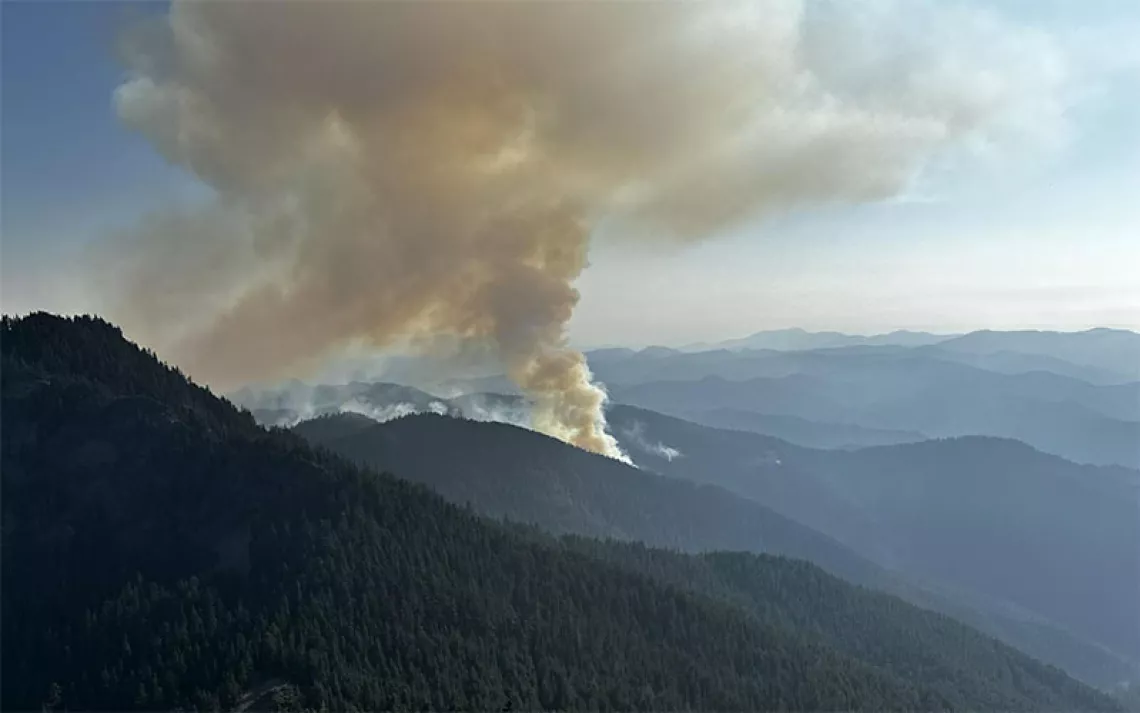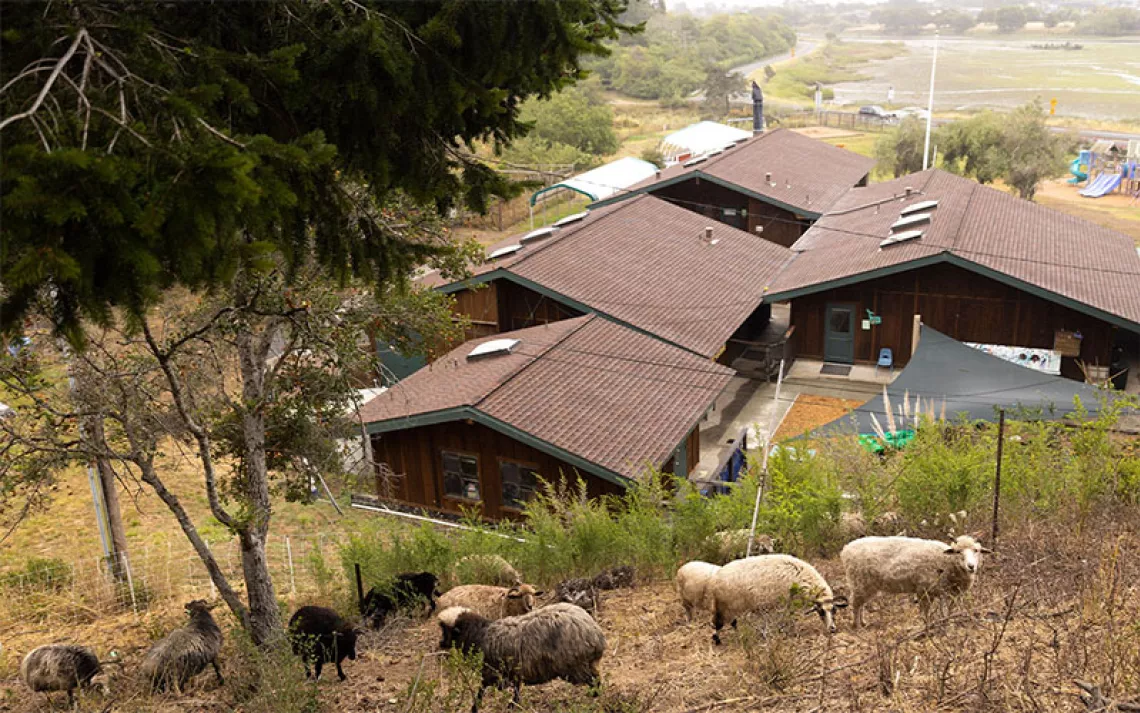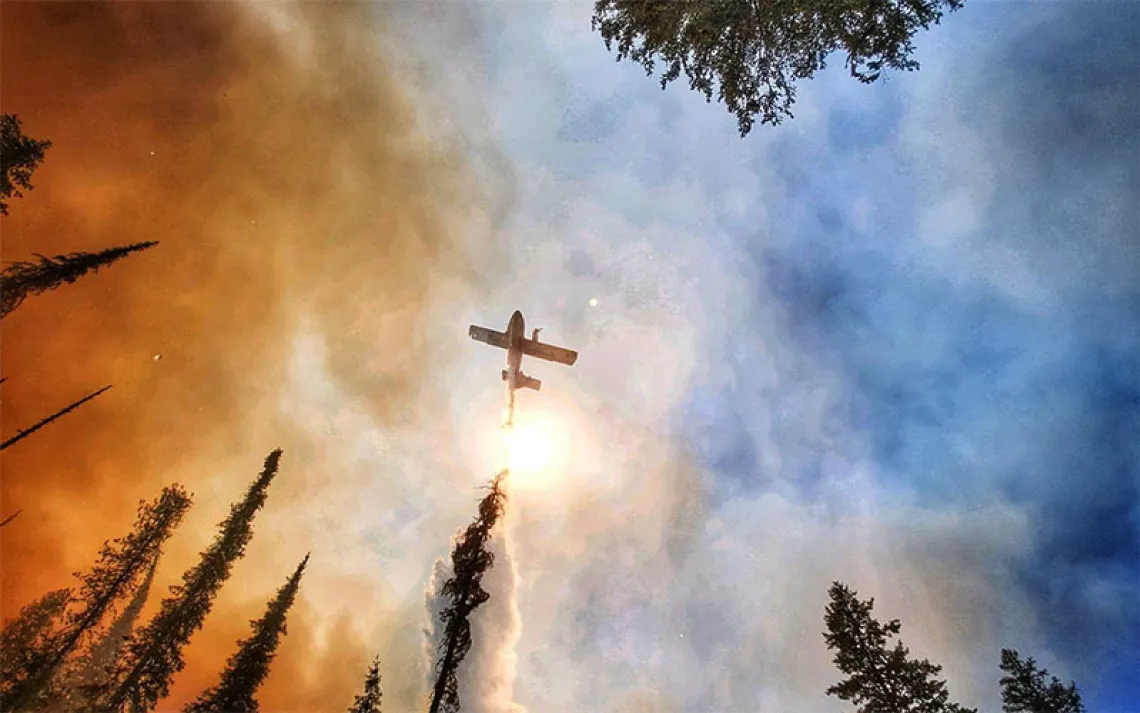Baptism by Wildfire-Fighting
“Wildland” tells a story of redemption and retrospection

Photos courtesy of Kahlil Hudson
When filmmakers Alex Jablonski and Kahlil Hudson decided to make a documentary about wildland firefighting, they wanted to get up close and personal with the men in the fireline. So they went there themselves.
“We actually became firefighters to make this film,” says Jablonski. “If we were going to do this story right, we needed to experience it with these guys, and just be there all the time.”
The resulting Wildland is one-part-redemption tale, one-part-coming-of-age story of a Type II Initial Attack handcrew in southern Oregon. Jablonski and Hudson stay out of the shot and capture the stories of their crewmates, many of whom face the arduous task of fighting wildfires—and reconciling the ghosts of their pasts and the promises of the future—for the first time.
An hour-long cut of Wildland kicks off the season premiere of PBS’s Independent Lens series tonight, October 29, at 10 P.M. Eastern/9 P.M. central. The full, 80-minute version can also be viewed in select theaters across the country, with a few screenings scheduled for January 2019.
A character-driven film, Wildland is devoted to firefighters’ inner journeys every bit as much as it is to their jobs. Viewers meet Charlie and Aiden, both bible college dropouts seeking raw experience. John’s in pursuit of redemption following a period of drug addiction. Their perceptive crew boss Tim leads by example—drawing on his years of experience fighting fires, as well as his own troubled past.

“We were really interested in the idea of rookies,” says Jablonski. “The guys who just had zero experience, getting their first taste in this world.”
For that reason, they didn’t consider working with any highly trained hotshot crews. They simply landed in southern Oregon, where they met Tim’s crew of first-time firefighters. “You get people from disparate backgrounds, who are trying to find themselves, to fill a void, or make amends,” says Hudson. “We weren’t looking for people with everything figured out.”
Jablonski and Hudson became members on this 20-man crew—bridging a gap often widened by the presence of a video camera. Just like their characters, the filmmakers wore their “yellows and greens,” carried hand tools, packed a firepack, and worked the fireline. They trained with the crew, ate with them, experienced their mundane moments as well as their misery—or as one veteran firefighter in the film describes that blend, “the long hours of hard, boring work punctuated by moments of sheer terror.”
The filmmakers forged a genuine bond with their crew, which translates into a largely unfiltered, honest look at the lives and souls of a Type II fire crew.
Then came the actual filming.
On the fireline, Jablonski and Hudson would trade off using a RED digital camera with a single 40mm prime lens. They used four lavalier mics to pick up audio from various members of the crew. The minimal gear kit was a decision based on necessity, but ultimately, it complements the film’s cinéma-vérité style. Jablonski and Hudson produced such a stunning display of naturally lit cinematography that viewers likely won’t miss the sweeping aerials and artistic wides featured in higher-budget films with bigger crews.
“When you see a wide shot, that’s because we hiked up to the top of a hill to get that distance,” says Jablonski.
As a result, the cinematography is as honest and experiential as the film’s narrative. Jablonski and Hudson truly put viewers in the boots of the wildland firefighters.
The documentary-makers have a track record of producing thoughtful, mindfully edited narratives, as well as stunning cinematography. Jablonski and Hudson met and started working together in film school at UCLA more than a decade ago. In 2012, they released their first feature-length documentary Low & Clear, which examines life and wilderness through the lenses of two old friends on a fly-fishing trip.
They also bring their signature thoughtfulness to commercial work through their production company Finback, which has produced content for companies like Patagonia, Filson, and Yeti. Jablonski recently edited Keith Malloy’s 2017 Fishpeople, and Hudson teaches film at the Institute for American Indian Arts in Santa Fe, New Mexico.
In Wildland, they bring the themes of journey and redemption to the forests of the Pacific Northwest. In the first scene, Charlie and Aiden sit by a river after a cross-country escapade in Aiden’s old van. They stoke a fire, read Ray Bradbury, dip into the cool mountain stream, and lose track of time.
Next, they sit through long days of class time at the crew base and put in hours of hard training. In one poignant moment, Charlie is reprimanded for carrying his tools over his shoulder—an infringement of fire crew rules.
Freedom of experience, the pressure of hard work. Long hours of misery, moments of sheer terror. Wildland is a spiritual journey. Jablonski and Hudson bring to life men in the forest in face of the flames, and back at crew base in face of their responsibilities, asking themselves, as Jablonski puts it, “Who am I, and what am I doing with my life? And what does this world hold for me?”
 The Magazine of The Sierra Club
The Magazine of The Sierra Club



